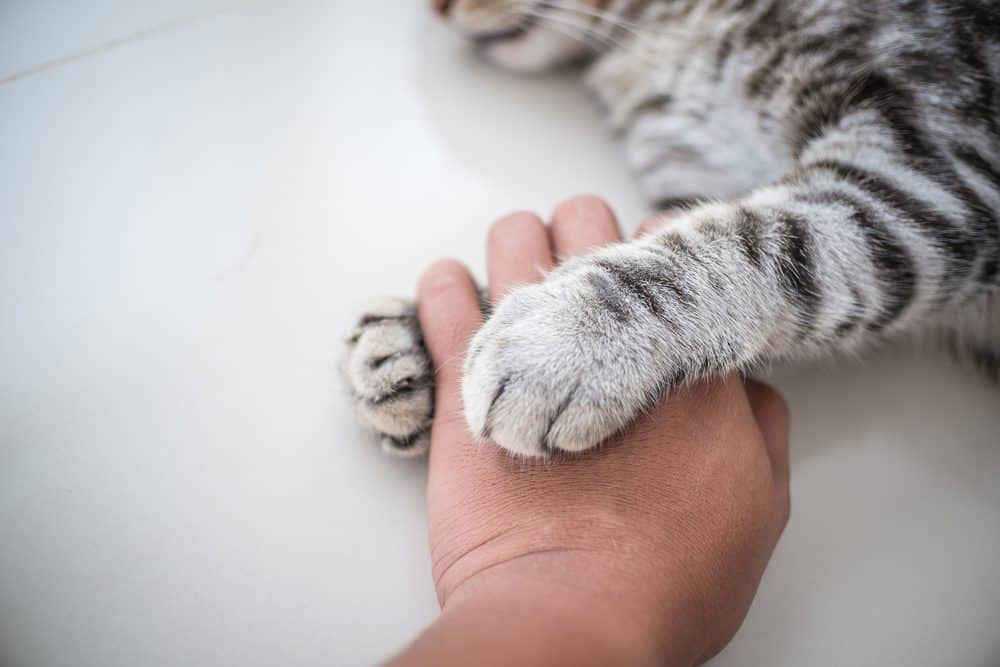
Separation anxiety is a condition commonly known in canines, but what about cats? Our feline companions have a reputation for being aloof, independent, or even antisocial – although there are many cat guardians who would firmly disagree with this sweeping generalisation. And, new research suggests that some cats are extremely attached to their human guardians and find it difficult to cope when they are absent.
A recent study by Daiana de Souza Machado and colleagues, from the Universidade Federal de Juiz de Fora, Brazil – the first questionnaire survey to identify possible separation-related problems in cats – found 13.5% of all sampled cats displayed potential issues during their owner's absence.
The data from the survey showed that 30 out of the 232 sampled cats met at least one of the criteria for separation-related problems, with destructive behaviour most frequently reported (present in 20 of the 30 cats). The other behaviours or mental states identified were: Excessive vocalisation (19 out of 30 cats), inappropriate urination (18 cats), depression/apathy (16 cats), aggressiveness (11 cats), agitation/anxiety (11 cats) and inappropriate toileting (7 cats).
What is separation anxiety?
Veterinarian Dr Krista A Sirois explains it like this: “Separation anxiety is an unwelcome condition that can be a result of excessive attachment. Research supports the fact that cats can develop separation anxiety syndrome, and they show many of the same signs that are seen in dogs.”
What causes separation anxiety in cats?
Dr Sirois advises: “Some factors could predispose a cat to developing separation anxiety, while other causes are environmental.” She outlines the following key factors:
- Being a female cat – female cats are diagnosed with separation anxiety more often than male cats
- Being an indoor cat – most separation anxiety cases are seen in cats that live entirely indoors and come from a home with only one adult caregiver
- Not having other pets in the home
- Experiencing a change in routine – such as moving to a new home, or changes in the caregiver’s schedule. A common scenario is a pet parent that has worked from home and then transitions to leaving the house for work each day
What can you do to relieve separation anxiety in cats?
If you’re worried that your cat is showing signs of separation anxiety, what should you do?
Feline charity Cats Protection advises: “The first step in dealing with a behavioural problem is to ensure that the cat undergoes a full health-check by a vet. This is needed to specifically rule out any underlying medical conditions that could have led to the behaviour. Any changes in the cat’s normal behaviour need to be discussed with the vet, even if it does not seem directly relevant to the behavioural problem at hand. If the vet ascertains that the problem is behavioural, then they may wish to send the cat to see a qualified behaviourist."
Cats Protection recommends contacting the Association of Pet Behaviour Counsellors and the Association for the Study of Animal Behaviour to find a local qualified behaviourist. These behaviourists see behaviour cases when these cases have been referred to them by a vet.
Dr Sirois advises thinking about ways you can keep your cat busy while you’re gone, which can help decrease anxiety. Here are some ideas to try:
- Puzzle feeders, which are toys that your cat has to play with to release the food inside, can be really helpful. Working for food is a really enriching experience for cats.
- Create a ‘treasure hunt’ by placing secret stashes of dry food in different locations, such as by special snoozing spots, scattered around a cat tree or on a favourite lookout spot, such as a high shelf.
- Check out live-streaming TV shows designed specifically for cats with feline-friendly distractions such as chirping birds or swimming fish, as featured on CatTime.
- Try calming products and diffusers, such as Feliway or Pet Remedy , which mimic feelgood feline pheromones.
- Try to ignore attention-seeking behaviours and give your cat attention when they are calm and showing signs of independence. For example, praise them or toss a small treat to them when they’re resting in another room or when they stop meowing for attention.
- Consistent routines are very beneficial for pets with anxiety disorders, so try to keep to the same schedule as much as possible.
- Remain calm when you leave your house and return home. Wait until your cat is calm and quiet to give them attention.
If you found this interesting, you may also like:
HOW CAT FRIENDLY IS YOUR HOME? You may have created a home that’s just perfect for you – but what does your cat think about it?
ENRICHING THE LIVES OF INDOOR CATS Cats kept inside need extra help from their human to enable them to display a normal range of behaviours, advises our in-house vet Dr Suzanne Moyes
CREATE A SAFE OUTDOOR SPACE FOR YOUR CAT Cats love to spend time out in the fresh air, but it’s just not an option for some. If you live by a busy road, have a nervous or disabled cat, it may just not be safe to let them wander around outside. The solution could be to provide them with a cat-safe outdoor space...
GARDEN DESIGNS FOR YOUR CAT Providing your favourite feline with an entrancing outdoor space that they’ll want to spend lots of time in will help to keep them safely out of mischief...
CAT CHAT While cats use a range of vocalisations such as yowling, hissing and growling to communicate with each other, meowing isn’t one of them. This is a behaviour they’ve adopted just for humans. But what are they trying to tell us?
Sources: sciencedaily.com, petmd.com, cats.org.uk














